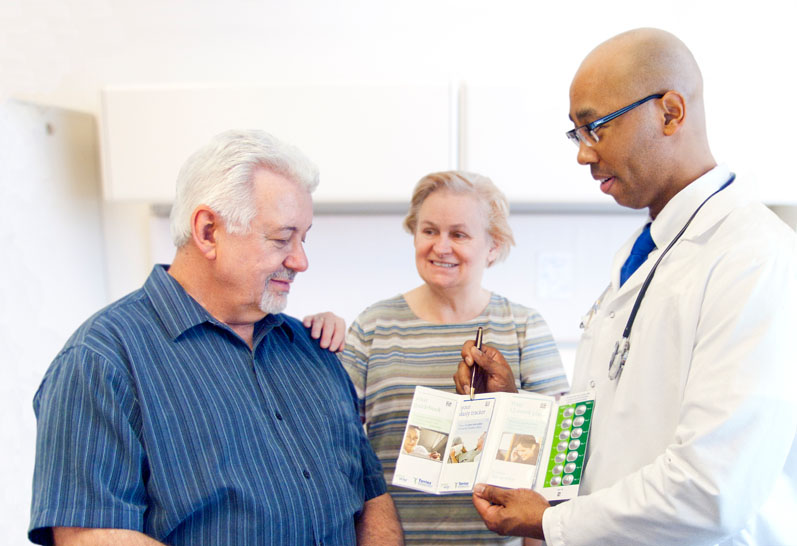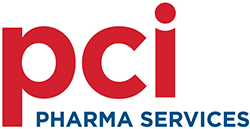Depending on which website you visit, the global pharmaceutical packaging market size was valued at either $77.65 billion in 2016 or $68,749 million in 2015 and is expected to witness substantial growth — owing to the rising demand for pharmaceuticals from emerging economies — and reach figures of $104,882 million by 2022 or $149.25 billion by 2026.
Confusing predictions and estimates aside, these products have gained a lot of importance during the past few years as they protect medicines and drugs against unfavourable external elements such as biocontamination, physical damage, degradation and counterfeiting.
Market expansion will be driven by increased R&D, new innovations in packaging materials, growth in the generics market and the rising trend of contract packaging, to name a few, as well as the soaring demand for reusable and ecofriendly packaging.
Weighing in on the topic, Dexter Tjoa, Director of Corporate Strategy, Tjoapack, observes that packaging continues to be a challenging issue for any company looking to market and sell pharmaceutical products. “There is a myriad of possibilities out there,” he says, “but it remains difficult to marry marketing, product protection, patient adherence and ease of use together into a suitable packaging solution.”
“We cannot forget that packaging generates a lot of waste across the pharmaceutical supply chain because of, for example, reworking or repackaging activities. This not only adds cost … but is also a big strain on the environment,” he adds.
“There is still a lot to be gained in the pharmaceutical supply chain by adopting flexible or postponement packaging strategies to mitigate rework and reduce general waste and surplus product.”
Dexter advises that a postponement strategy can be paired with a full, traceability enabled supply chain by going beyond the current serialisation compliance obligations and leveraging the potential of the data that is generated to gain greater demand control, once again mitigating cost and wastage.
“These will just be some of the focus areas dominating the pharmaceutical packaging landscape in 2019,” he notes, adding: “I also think that further proof of concepts with IoT-enabled packaging will emerge, primarily with the aim of improving patient adherence. However, I don’t expect a large-scale application to enter the market for the commercial packaging of pharmaceutical products in 2019.”
“Lastly, as the supply chain increases in complexity, packaging becomes more complicated and more important as a process. Throughout 2019, I believe we will continue to see an increase in outsourced packaging activities to specialised companies that are equipped to deal with the challenges of both today and tomorrow,” he concludes.
Mike Danzi, CEO of Legacy Pharmaceuticals, agrees with Dexter’s last point. “Owing to the shift of the development pipeline towards biologicals, the pharmaceutical industry is witnessing an unprecedented change in drug product manufacturing demand,” he says. “Sterile manufacturing resources are valuable — but expensive and difficult to maintain."
"As Big Pharma companies devote sterile manufacturing resources to biologic products, we see them increasingly outsourcing the production of older ampoule- and vial-based sterile drug products to lean CMOs that can produce them reliably and at a low cost, freeing up capacity for their new biologic drugs.”
Patient-centric focus
“Drug delivery is evolving,” comments Justin Schroeder, Senior Executive Director, Global Marketing and Design at PCI Pharma Services.
“With the advancement of biologic medicines, more targeted and specialised therapies, as well as advances in genetic sciences, drugs are increasingly more precision focused. And, with stronger incentives and a focus on breakthrough medicines, rare diseases and orphan drugs, new therapies are being realised for patients who may traditionally not have had any available treatment. At the same time, the industry has taken a more holistic approach to patient centricity, focusing on the needs and daily life of patients.”
“Patient centricity is exemplified in many new drug delivery forms,” says Justin, adding: “Traditional oral medicines are incorporating novel new technologies, such as softgels, liquigels and controlled release, as well as quick-dissolve or chewable formulations, making medicines more efficacious or more palatable."
"In keeping with the patient focus, oral solid dosage forms are also increasingly being delivered using more convenient systems, which are designed to positively impact patient compliance and adherence, communicating and guiding the optimal dosing regimen, calling attention to critical success factors and providing ancillary patient education, all while supporting an on-the-go lifestyle.”
Similarly, observes Justin, parenteral delivery forms are evolving too. “Traditional injectables are increasingly being delivered to patients in forms that allow them to self-administer and minimise the need for in-clinic administration."
"Whereas injectables had been primarily packaged in vials and syringes, they are now being delivered in novel, prefilled syringes, autoinjectors and multiuse pens (when applicable). Significant breakthroughs have also been made in transdermal patches, microneedles and wearable infusions, delivering metered dosing for extended periods of time.”
In a similar vein, Cindy Reiss-Clark, Vice President and General Manager, Global Biologics, West Pharmaceutical Services, contributes that: “As we move into 2019, the patient experience will drive drug packaging and delivery trends. Chronic conditions, such as diabetes and rheumatoid arthritis, require intense therapeutic regimens, often consisting of daily injections and monitoring. As the trend toward home care and patient convenience continues, wearable delivery devices that offer a higher dose during an extended period will be in demand.”
“Pharmaceutical companies are looking for single-dose options to help manage chronic conditions more efficiently while maintaining therapeutic effectiveness. Weekly or monthly single-dose insulin may provide a better patient experience for those currently requiring multiple injections to manage glucose levels. Less frequent doses require delivery systems that can accommodate higher dose volumes."

"We are seeing a need for 3+ to 20 mL options that require changes to cartridge systems, autoinjectors and on-body systems. When developing new options for CAR-T treatments — currently delivered via IV bags — packaging manufacturers need to create a delivery system for the cell space and address the complications of cryotemperature storage, in addition to the right delivery device for these new therapies.”
“In addition,” she says, “with the change in regulatory requirements for combination products, pharmaceutical and biotech companies are spending resources to remediate DHF to meet the new regulations. In parallel, these organisations will need to change their approach and strategy for future projects, which will alter their supply base, including packaging and device companies."
"This should provide an opportunity to change the interactions between suppliers and pharmaceutical/biotech companies, bringing us much closer and improving the way we build strategies and solutions for delivery systems.”
Material matters
Taking a slightly more pragmatic view, Tom van Ginneken, Global Product Manager for SCHOTT’s TOPPAC syringes, remarks that, although borosilicate glass is considered to be the gold standard for pharmaceutical primary packaging, there is a growing market demand for polymer-based pharmaceutical containers. “Cyclic olefin copolymer (COC) is a well-established container material for many drugs,” he says, “which has grown in popularity, especially in the field of prefilled syringes.”
Although COC offers great design flexibility and a reduced risk of breakage, it has a lower oxygen and gas barrier threshold than glass, which increases its interaction potential.
“To overcome this,” advises Tom, “the syringes can be matched with functional labels that have the potential to enhance the primary packaging by means of adding specific material properties. In light of this, we conducted a joint study with Schreiner MediPharm, as an expert in labelling solutions, and tested a variety of different polymer syringe/label systems."
"Among others, the behaviour with oxygen- and light-sensitive drugs was evaluated. For example, oxygen-sensitive drugs such as biologic, require a product solution that reduces the risk of oxidation, which can affect the shelf-life of the formulation. The study found that functional labels made out of gas barrier films have the potential to significantly reduce oxygen permeation.”
“For light-sensitive drugs, a protective measure could be the use of coloured glass. Yet, this can make inspection complicated or even impossible. Our study found that using a UV-protection film — optionally combined with colour printing — allows for tailored protection levels against ultraviolet and visible light. In addition, a resealable window allows for a full inspection of the formulation,” he summarises.
Patient-specific packaging
As the industry looks toward more personalised medicines and patient-centric treatments — especially for vulnerable populations — a packaging device may provide a better way to administer treatments, suggests Catalent’s Director of Global Communications and Marketing, Chris Halling. “An example would be one that delivered a dose that’s appropriate to a child’s weight, rather than its age, to allow for the high levels of heterogeneity. The challenge, of course, is providing the right combination of dose and device,” he says.
“This dose/device combination could significantly improve a patient’s experience and adherence to a treatment if, for example, side-effects discouraged the patient from taking their medicine as prescribed. Smart devices can even assist patients who have difficulty following their treatment regimens and can provide helpful reminders that a dose is due, prevent accidental overdose or inform medical staff when medications are not taken at the right times,” he continues.
There is a long history of innovation in packaging development and, yet, issues persist; effective childproofing can prevent other patient groups from opening a pack, for example. Chris explains: “Developing a package that can be opened by the intended user, but offers sufficient protection for the drug itself and prevents it from being opened by children, can be challenging, especially if we consider the limitations of some user groups, such as the elderly or infirm."
"New types of primary packaging dosing, such as stickpacks or unit dose solutions, can help to revive older products by introducing new features for patients or for consumers of OTC products. These may include on-the-go versions of existing OTC products and more hygienic dispensing mechanisms. Transparent foils in combination with coloured granules or pellets can be used to improve the patient’s experience and, from a brand owner’s perspective, to boost the perception of one product compared with another.”


